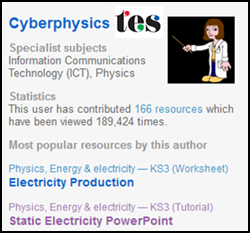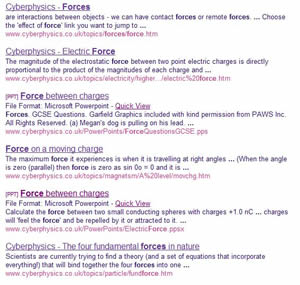Welcome to you 'teachers of physics' - this page tells you how best to use this site! I hope that you will find this site useful. I do not intend to 'teach grandma to suck eggs' but I have had over 20 years experience in teaching Physics at High School level and now I am retired I want to share that expertise and the resources I have prepared and/or found useful during my career.
I have had positive feedback from teachers who have used this site to research lesson material and to direct 'revising pupils' to... and I hope you too will find it a useful tool. I have listed 'site jumps' that I think you will find useful. Take a look at the links. Some of the subjects covered relate to the UK educational system - others will be useful to students from any country.
I add to the site from time to time. If you want to hear of updates you can follow Cyberphysics on Facebook, Twitter - or raise queries on the Blogger page. I don't inundate you with posts - I just say when I have added something new... There is a 'student teacher' section. I am a trained mentor for PGCE students from Birmingham University and have always enjoyed having PGCE students 'under my wing'. I have had positive feedback from student teachers who have used this site to research lesson material and to look for advice on how to tackle misconceptions. You might find some of the pages useful for your PGCE students. The 'Exam preparation' menu choice from the top bar, include as 'exam skills' section that will take you to a selection of helpful articles on examination technique, revision tips etc. It is a useful section to look at if you want to improve the general skills of your pupils - setting them the task of reading some of this material and then making peer presentations would be a possible homeowrk task. The 'UK Key Stages' choice in that menu takes you to the three secondary school 'key stages' that are used in the UK educational system and there are sections of example questions and their solutions that might prove useful in lessons or to be set as homework. Solutions can be called up onto a whiteboard so that the students can mark their own work.
Each stage also has 'interactive syllabuses' which link to background pages where relevant.
|
Follow me...
|



 Finding the Physics Information you need
Finding the Physics Information you need



